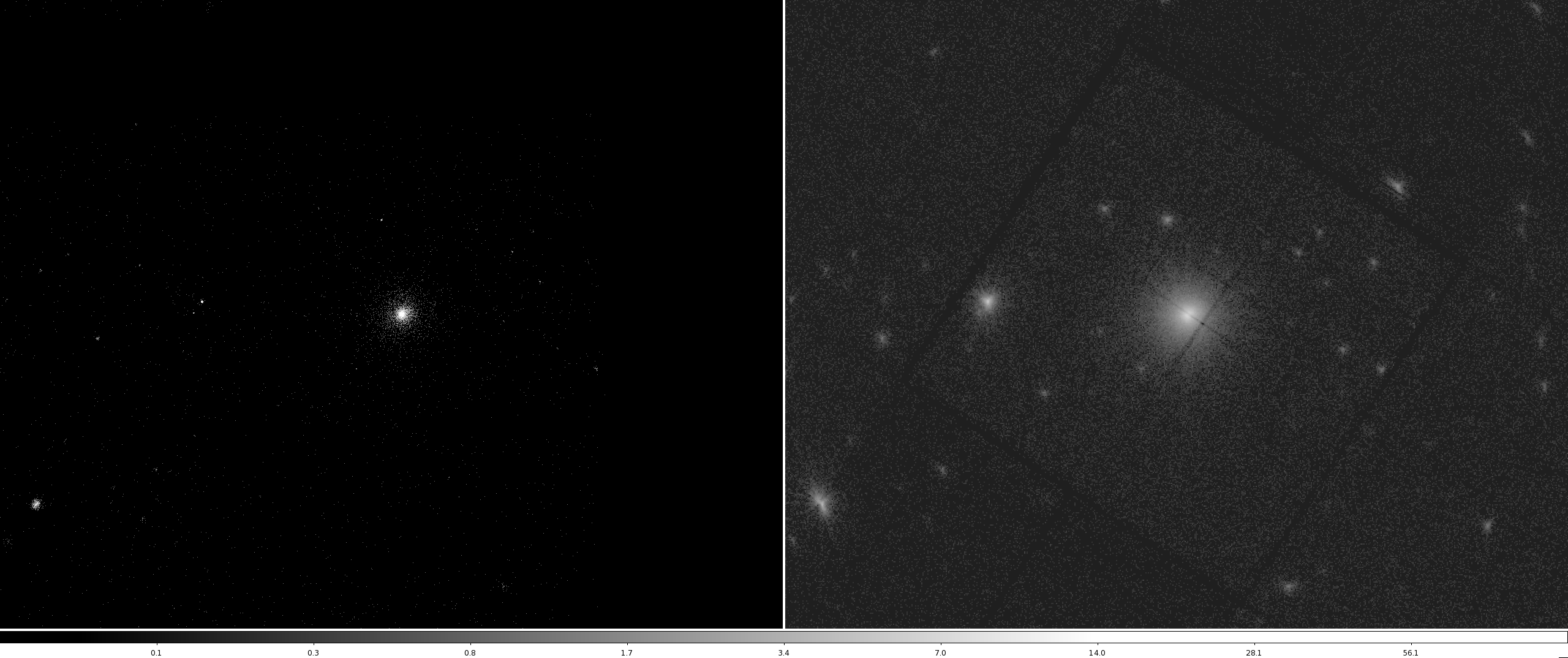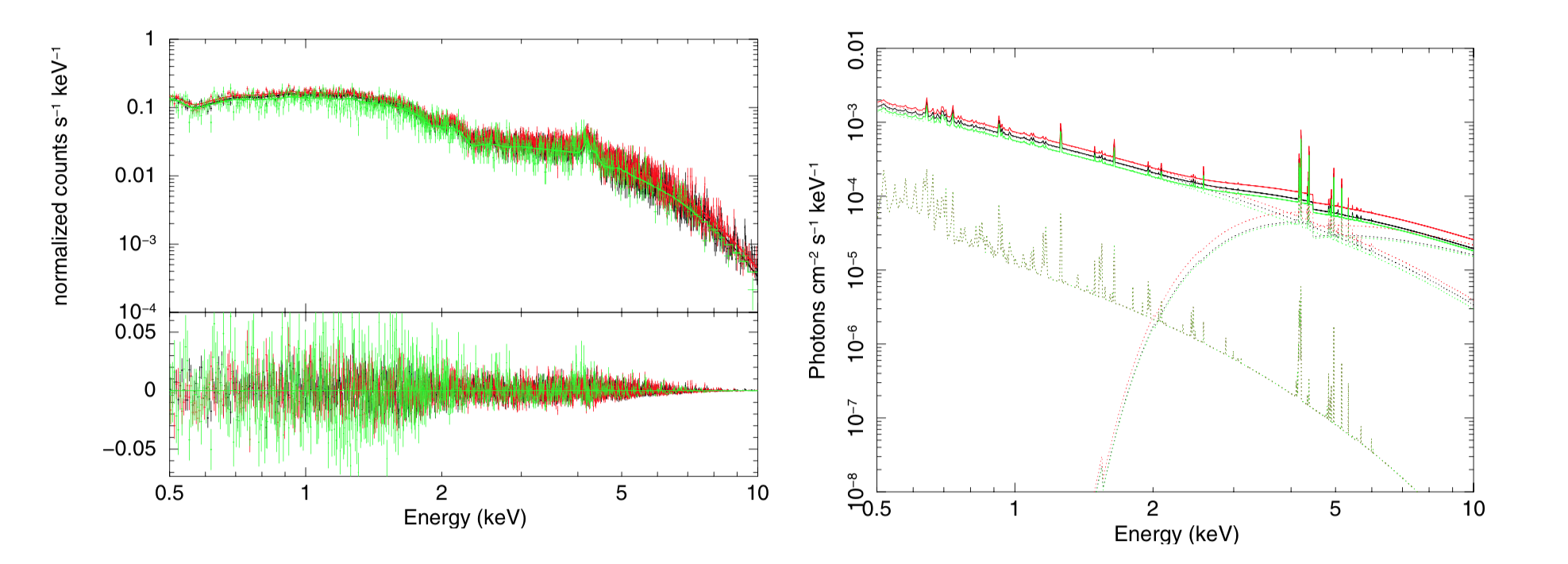The puzzling core of the Phoenix cluster: deep X-ray observations
The majority of baryons in clusters of galaxies is constituted by virialized hot gas. Temperature, density and chemical composition of the so-called intracluster medium (ICM) can be directly measured from its X-ray emission. Spatially resolved spectroscopic studies showed a significant temperature decrease and strongly peaked surface brightness profiles in the center of a significant fraction of the cluster population. The short cooling times associated with these high-density gas regions would imply that several hundreds of solar masses of gas were completely cooling giving origin to a massive cooling flow. The fate of this cooling gas would be to feed massive star formation episodes in the central galaxy.
However, the observed lack of massive star formation events and of large reservoirs of cold gas at the center of galaxy clusters casts some doubts on the hypothesis of a complete cooling of the ICM in cluster cores. This implies that there must be some process that heats the gas and prevents its cooling. Among the many mechanisms investigated in the past years, feedback from active galactic nucleus (AGN) is considered the most plausible heating source. The feedback mechanism has been observed in its full complexity in nearby clusters such as Perseus, Hydra A and a few others. In the large majority of the clusters we can't observed the many facets of the feedback processes, and therefore we are limited to a broad description of the thermodynamic properties of the gas in the core. From this point of view, the regularity of the cool-core appearance over the entire cluster population and a wide range of epochs points toward a gentle heating mechanism, with the radio AGN acting with a short duty-cycle to counterbalance the onset of cooling flows since the very first stages of cluster formation. Despite this picture looks satisfactory, several questions remain about the detailed physical mechanism that transfer energy to the ICM.
Surprisingly, a recent observation introduced further changes in the picture outlined here. The cluster SPT-CLJ2344-4243 (also known as the Phoenix cluster) at a redsfhit z~0.6 for the first time shows hints of a massive cooling-flow-induced starburst, suggesting that the feedback source responsible for preventing runaway cooling may not yet be fully established. SPT-CLJ2344-4243 shows a strong cool core with a potential mass deposition rate of ~3000 Msun/yr derived from the X-ray luminosity. At the same time, a very high star formation rate (SFR) is observed in the brightest cluster galaxy (BCG), which has originally be estimated to be ~700 Msun/yr. Clearly, this is the best target known to date where we can expect a massive cooling flow feeding in real time the intense starburst in the central galaxy.
 |
| Fig.1 - Soft band (0.5 - 2 keV) X-ray images of the Phoenix cluster from a shallow Chandra exposure (left panel) and one chunk of the XMM-Newton observation (128 ks with the MOS instrument). While the Chandra image is much sharper, the XMM-Newton image clearly collected a much larger number of X-ray photons. In both cases, it is possible to appreciate the extremely peaked X-ray surface brightness of the Phoenix cluster. Image credit: Paolo Tozzi |
In this framework, Paolo Tozzi (INAF-Arcetri) and collaborators (including J. Santos and G. Cresci at INAF-Arcetri), obtained 220 ks of observation with the X-ray satellite XMM-Newton, with the main goal of investigating the thermal structure of the cool core and comparing the mass deposition rate in the core to the star formation rate in the BCG. The XMM-Newton telescope is able to provide a much larger statistics with respect to the other major X-ray mission, the Chandra telescope. The spectral analysis of the deep XMM-Newton observation of the Phoenix cluster found an average mass-deposition rate between 210 and 620 Msun/yr for the gas in the temperature range 0.15-3.0 keV (subject to calibration uncertainties). Investigating the 0.15-1.8 keV temperature range, the team found only upper limits to the mass deposition rate of less than 500 Msun/yr at a 3 σ confidence level, therefore lower than the SFR observed in the BCG.
 |
| Fig. 2 - Left panel: MOS spectrum of the Phoenix cluster from three separate pointings, with residual with respect to the bestfit model in the lower insert. Right panel: solid lines show the total bestfit model in each exposure, while dotted lines show the different components: the dominant thermal emission, the AGN (dropping at low energies) and the isobaric cooling flow model in the 0.5-3 keV temperature range (lowest component). Image taken from P. Tozzi et al (2015, A&A). |
Another important piece of information comes from the infrared observation from ESA's Herschel Space Observatory. The Herschel telescope looks into the far-infrared observational window, that allows the detection of cold dust in galaxies - an important signature of on-going star formation activity. Thanks to the Herschel data the team was able also to provide an independent analysis of the far-infrared spectral energy distribution of the BCG, obtaining a star formation rate (SFR) equal to 530 Msun/yr with an uncertainty of 10%, which is lower than previous estimates by a factor 1.5.
Although a definitive conclusion on the correspondence between the SFR and the mass deposition rate in the core of the Phoenix cannot be reached, this analysis confirms that the Phoenix harbors the strongest cooling flow observed so far in the Universe. This analysis shows for the first time that massive cooling flows can actually form in the cores of massive clusters. However, the instantaneous mass deposition rate is significantly lower than the star formation rate observed in the BCG, which implies that the cooling gas is not immediately used in star forming processes.
These results are published in "New XMM-Newton observation of the Phoenix cluster: properties of the cool core" by P. Tozzi et al., 2015, Astronomy & Astrophysics, 580, 6.
Edited by Anna Gallazzi and Paolo Tozzi



